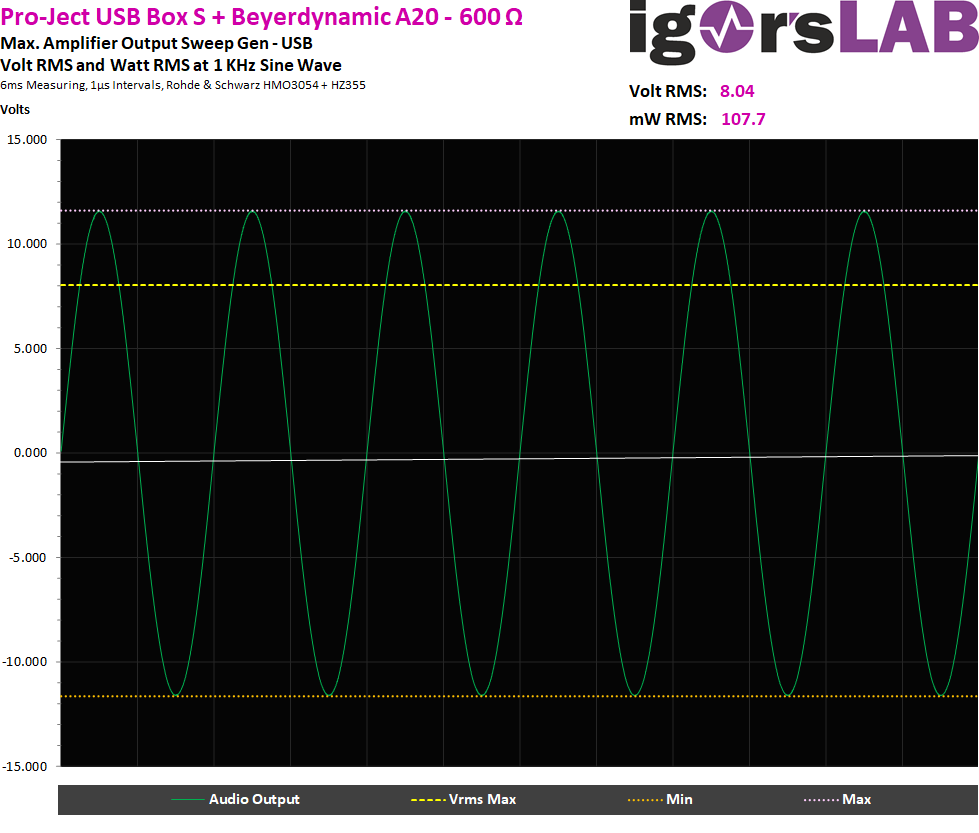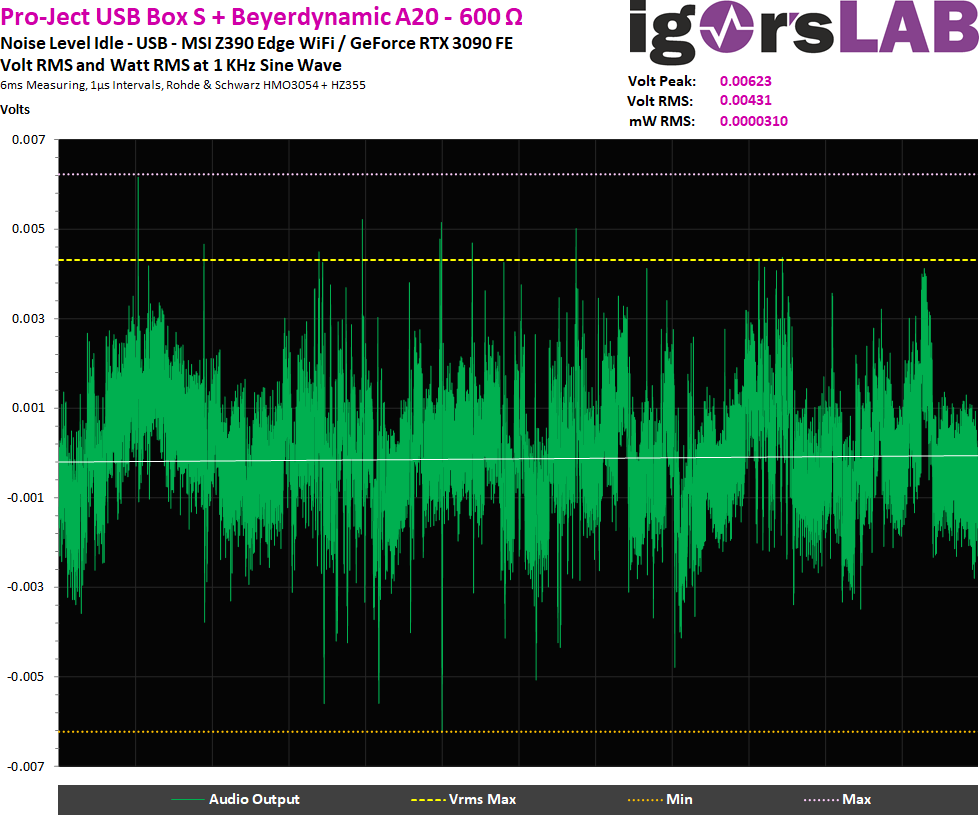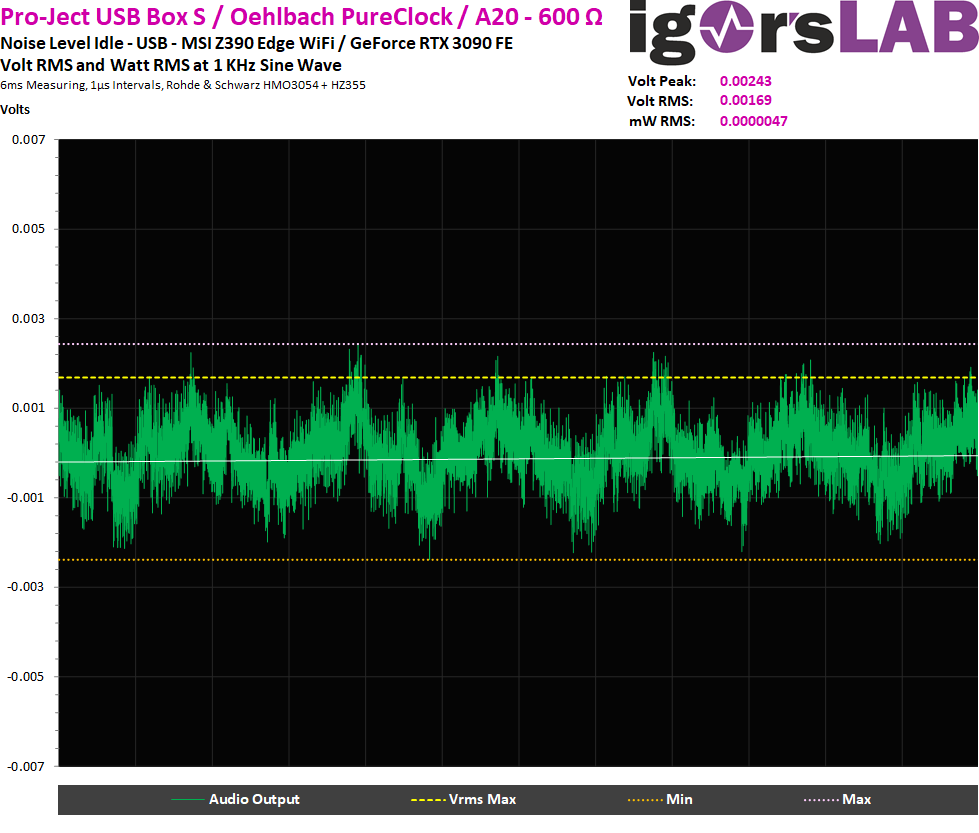First, I set the level of the Beyerdynamic A20 so high that I reach full scale at 600 ohms without distortion becoming visible on the oscilloscope. A whopping 8 volts RMS or almost 108 mW RMS per channel are of course a revelation here and well suited to shoot some headphones gallantly into orbit. The eardrums of the insane daredevils, of course, at the same time. But always good to know what’s going on when you’d like it to be. The 20.3 dBu resp. 18.11 dBV is a good thing to take along. The electrical power level of -0.97 dB is also completely acceptable.
Let’s stop the 1 kHz hype train and measure the level of noise that makes it to the amplifier output. So the whole bag of crickets and cicadas from the direction of PC electronics! The peak voltage is 0.0062 volts (-41.9 dBu, -44.2 dBV) , Vrms is 0.0043 (-45.1 dBu, -47.3 dBV) and the converted RMS power is 0.0003 mW, i.e. -75.2 dB as power level. This is far above what is acceptable in the sum of the individual components of DAC and headphone amplifier, and is above all something that is extremely audible and disturbing.
Now let’s plug in the PureClock, which does a visibly good job and can reduce the high frequency noise extremely. You can’t get rid of it completely, but it is subjectively no longer audible. The peak voltage shrinks to 0.0024 volts, i.e. -50.2 dBu and -52.4 dBV respectively, the more important Vrms drops to 0.0017 volts or -.53.2 dBu and -55.4 dBV. The power level at the 0.000005 mW is now -83 dB. You can really leave that alone because the ideal values from the catalogue will only be achieved on the PC with active components between the USB output and the DAC, if at all.
Summary and conclusion
The PureClock from Oehlbach is not a solution for a possible ground hum, because it does not provide galvanic isolation between PC and DAC. But you don’t promise that at all. It ends up being a very effective, completely passive filter in the USB string. No more, but also no less. The high-frequency noise, which is passed on to the chain via the voltage supply and ground, can be damped very effectively with this stick, but it cannot be completely eliminated. But it is quite sufficient for normal everyday life.
Now what about the jitter? The joke is that the effect can only be proven if there really is a really messed up and twisted signal. The filter can help to significantly improve signal integrity, so that clock noise can also be largely eliminated. But that it always “sounds better” per se is a legend. However, it sounds better the more lousy the signal source acts. For notebooks with a simple graphics solution and battery operation, the use is rather pointless and drifts somewhat into the realm of audiophile mythology. On the home PC with a fat power supply and potent graphics card, however, something like this can really be the last resort. So you can see it as you would like, the 20 euros are quite appropriate for the product, although not really cheap.



































Kommentieren